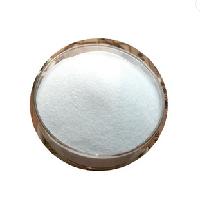In recent years, with the development of local pilots for the collection of proprietary Chinese medicines in various places, as well as the promotion of various medical reform policies, the pace of collection and collection of proprietary Chinese medicines will continue to accelerate
.
In fact, since the State Council issued the Opinions on Promoting the Normalization and Institutionalization of Centralized Drug Procurement in February 2021, the speed of collection and collection of proprietary Chinese medicines has been accelerating and the scope has been expanding
.
At the same time, the provincial alliance has gradually become the main model
of collection and collection of proprietary Chinese medicines.
Among them, it is worth mentioning that in the second half of 2021, Hubei led 19 provinces (autonomous regions and municipalities) to form an inter-provincial alliance of proprietary Chinese medicines and carried out a six-month collection of proprietary Chinese medicines
.
According to the results of the collection, 182 products of 157 companies participated in the quotation, the procurement scale was nearly 10 billion yuan, 97 enterprises and 111 products were selected, the selection rate reached 62%, the average price of the selection was 42.
27%, and the decline rate was high by 82.
63%, which is expected to save more than 3 billion yuan
in drug costs every year.
Since the beginning of this year, the speed of promoting the collection policy of proprietary Chinese medicines has begun to accelerate
significantly.
Recently, under the guidance of the National Medical Insurance Bureau, the Hubei Provincial Medical Security Bureau has issued an invitation to all provinces across the country to take the lead in establishing the National Joint Procurement Office of Proprietary Chinese Medicines and establishing a procurement mechanism
for the National Alliance of Proprietary Chinese Medicines after the collection of the Interprovincial Alliance of Proprietary Chinese Medicines in 19 Provinces in 2021.
On September 9, the National Joint Procurement Office of Proprietary Chinese Medicines also issued the "National Alliance of Proprietary Chinese Medicines Procurement Announcement (No.
1 of 2022)", indicating that it will carry out collective procurement of 42 proprietary Chinese medicine products in 16 product groups, and the procurement cycle will be 2 years, which can be extended
depending on the situation.
The collection will be the first time to basically achieve a nationwide unified procurement, the industry believes that the establishment of the national patent Medicine Procurement Office and the National High-value Consumables Procurement Office of the same level, representing the full opening of the collection of proprietary Chinese medicines, will further promote the institutionalization and organization of drug collection, and promote the unification and standardization
of the reimbursement of medical insurance for proprietary Chinese medicines nationwide.
In general, from the current point of view, under the promotion of policies, the collection of proprietary Chinese medicines has officially entered the substantive start-up stage
from the level of discussion and brewing.
In the future, the centralized procurement of proprietary Chinese medicines will take "price for volume" as the core guiding principle, focusing on the procurement of varieties with large clinical needs to meet the needs of
patients.
For the market and enterprises, the collection of proprietary Chinese medicines has both opportunities and challenges
.
First of all, the joint procurement of proprietary Chinese medicines will bring stable income to a large number of pharmaceutical companies, of course, it will also bring about the continuous intensification and reshuffle
of competition in the proprietary Chinese medicine market.
In this context, the industry believes that the days of chinese proprietary medicine companies lying down to make money in the past are running out, and they need to increase investment in research and development and actively embark on the road of innovation in order to promote development
.
In fact, innovation has also been the direction of
policy support in recent years.
In recent years, the approval and review of traditional Chinese medicines have been significantly accelerated, and the policy measures have become more sound, starting from the aspects of status, research and development, use, and team building, and are vigorously promoting the inheritance and innovative development
of traditional Chinese medicine.
According to the "2021 Blue Book of National Chinese Medicine Supervision", in 2021, the State Food and Drug Administration approved a total of 12 new Chinese medicine drugs (including 9 innovative drugs) for listing, and approved 34 Clinical Trials
of Chinese Medicines.
According to this trend, the industry expects that in the future, under the background of the continuous expansion of the collection of proprietary Chinese medicines, companies that lay out innovative chinese medicines and have cost and variety advantages will easily stand out and achieve price for volume
.







